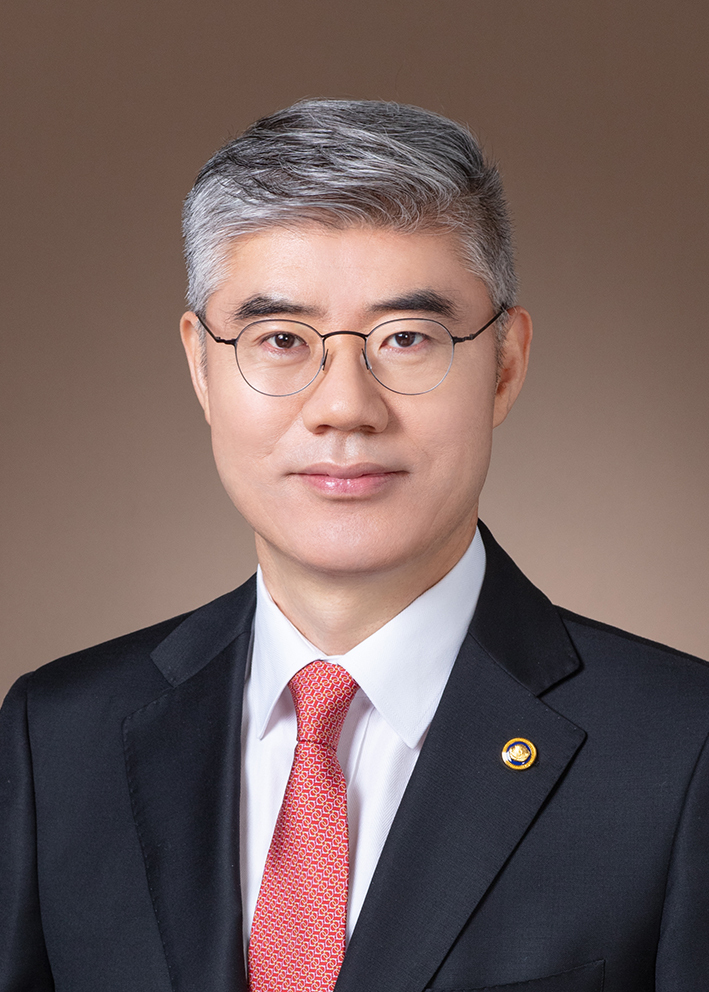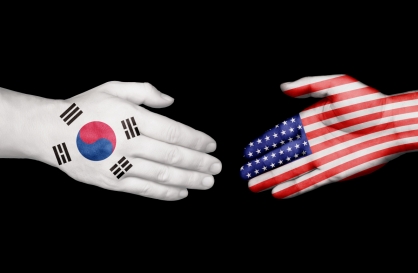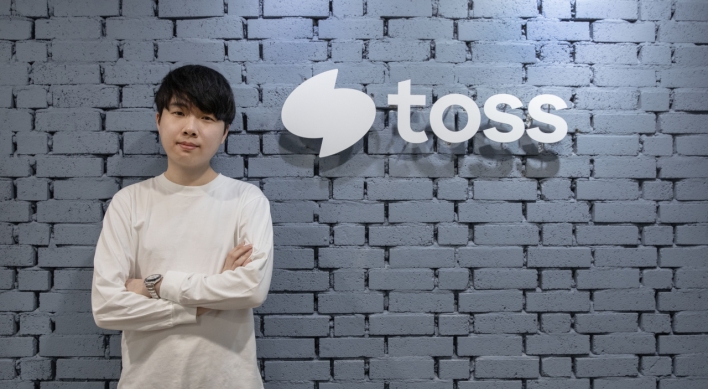An advanced weather radar network: The first line of defense against severe weather
By Korea HeraldPublished : Nov. 17, 2021 - 11:01

“An instrument called Cheugugi was made in Seoul from iron for measuring rainfall. It measured one cheok and five chon (about 32 cm) deep and seven chon (about 15 cm) in diameter.”
- May 8, 1441, 23rd year of King Sejong’s reign
This is the first record of humanity’s first step in the scientific measurement of rainfall, as written in the Veritable Records of King Sejong on May 8, 1441. The cheugugi was similar to modern rain gauges except for the ways of communications and recording, showing the great scientific and technological capabilities of the Joseon era in Korea. Now we are living in a world where the intensity of severe weather events such as heavy rain and snow is increasing due to climate change. How do we measure rainfall today?
In recent years, the magnitude and pattern of severe weather events have changed so rapidly that it is increasingly difficult to predict these events based on the knowledge and experience accumulated from the past. What matters most in taking preemptive measures to respond to rapidly changing high-impact weather events is to monitor and identify meteorological conditions in a prompt and accurate manner. To this end, the amount of water in clouds is estimated before raindrops fall to the ground. Weather radars are the only meteorological instruments that can observe the three-dimensional structure of precipitation systems, and they play the most important role in monitoring severe weather events. The current weather radars of the Korea Meteorological Administration have been faithfully performing their duties at 10 radar stations nationwide, like a lighthouse standing still and beaming light in the middle of a rough sea.
To strengthen the weather radars’ severe weather monitoring capabilities, in 2014 the KMA began replacing its old radars with cutting-edge third-generation radars and completed the transition in 2019. If the previous second-generation radars were like X-ray machines, the third-generation radars are like precision CT scanners. Unlike conventional radars, the new radars can detect not only precipitation but the growth of hailstones in clouds immediately, allowing for precise monitoring of severe weather events.
Along with the establishment of a new nationwide weather radar network through the next-generation radars, the KMA is also making significant efforts to enhance cooperation with relevant agencies at home and overseas to expand the monitoring areas of its radars. For domestic cooperation, for example, it concluded a pan-governmental agreement with relevant agencies including the Ministry of Environment and the Ministry of National Defense for joint utilization of weather radars and shares radar data from 26 stations in real time for multidimensional monitoring of severe weather events. For cooperation with foreign agencies, the KMA exchanges radar data from 32 stations around the Korean Peninsula in real time with neighboring countries in East Asia such as China, Japan, Russia, Taiwan and Hong Kong, as well as the US, through close cooperation. The data from other countries is used to monitor severe weather and meteorological conditions such as typhoons and summer monsoon systems that are approaching South Korea. The KMA is also making efforts to gain more information on weather conditions in North Korea by exchanging radar data with Yenji, a city in northeastern China that is close to the North Korean border, and Vladivostok, a Russian city near the North Korean border.
Since Korea is a peninsula surrounded by water on three sides, the nature of the air and precipitation systems changes significantly as they move from the sea to the land. Also, the complex terrain makes it difficult to accurately estimate the amount of precipitation on the ground with weather radars. Moreover, even though techniques for data processing and estimating precipitation levels using second-generation radars were introduced to South Korea, they were often not appropriate for South Korea. Therefore, we decided to develop the basics of radar-related techniques and developed a standard format for radar data and data quality control techniques. As a result, we were able to significantly improve the quality of radar data, as well as increasing the accuracy of the rainfall estimates to 95 percent of accuracy in leading countries. Going beyond precipitation estimates, this year we started to develop our own AI-based precipitation prediction model using radars, with the aim of approaching the prediction levels of leading countries. Together with the establishment of a new radar network, core technologies for data analysis and precipitation prediction with third-generation radars have been developed for forecasters with South Korea’s own technology to strengthen high-impact weather monitoring. This way, we are making efforts to reduce dependency on foreign technologies.
As a powerhouse of information and communications technology, South Korea leads the world in electronic engineering, but it is still dependent on imported electronic equipment for weather radars. We have begun to create a new hardware configuration of the weather radar network with third-generation radars. Now is the best time to develop our own independent radar technologies. If we do not start this right now, the technological gap with the leading countries in the world will get wider, making it difficult to have independent hardware technologies. Accordingly, this year the KMA took its first step to develop core signal processor technology, the brain of a weather radar, over the next five years. Even if we accelerate the technological development now, the results will not be visible immediately. Therefore, the KMA has decided to act right now for technological innovation.
The KMA aims to become a world-class agency in weather services by having independent radar technologies and providing customized services based on a third-generation weather radar network. We will continue to make efforts to develop AI-based very-short-range forecast techniques and independent core technology for hardware to provide new weather services for future generations.
By Park Kwang-suk, administrator of the Korea Meteorological Administration
- May 8, 1441, 23rd year of King Sejong’s reign
This is the first record of humanity’s first step in the scientific measurement of rainfall, as written in the Veritable Records of King Sejong on May 8, 1441. The cheugugi was similar to modern rain gauges except for the ways of communications and recording, showing the great scientific and technological capabilities of the Joseon era in Korea. Now we are living in a world where the intensity of severe weather events such as heavy rain and snow is increasing due to climate change. How do we measure rainfall today?
In recent years, the magnitude and pattern of severe weather events have changed so rapidly that it is increasingly difficult to predict these events based on the knowledge and experience accumulated from the past. What matters most in taking preemptive measures to respond to rapidly changing high-impact weather events is to monitor and identify meteorological conditions in a prompt and accurate manner. To this end, the amount of water in clouds is estimated before raindrops fall to the ground. Weather radars are the only meteorological instruments that can observe the three-dimensional structure of precipitation systems, and they play the most important role in monitoring severe weather events. The current weather radars of the Korea Meteorological Administration have been faithfully performing their duties at 10 radar stations nationwide, like a lighthouse standing still and beaming light in the middle of a rough sea.
To strengthen the weather radars’ severe weather monitoring capabilities, in 2014 the KMA began replacing its old radars with cutting-edge third-generation radars and completed the transition in 2019. If the previous second-generation radars were like X-ray machines, the third-generation radars are like precision CT scanners. Unlike conventional radars, the new radars can detect not only precipitation but the growth of hailstones in clouds immediately, allowing for precise monitoring of severe weather events.
Along with the establishment of a new nationwide weather radar network through the next-generation radars, the KMA is also making significant efforts to enhance cooperation with relevant agencies at home and overseas to expand the monitoring areas of its radars. For domestic cooperation, for example, it concluded a pan-governmental agreement with relevant agencies including the Ministry of Environment and the Ministry of National Defense for joint utilization of weather radars and shares radar data from 26 stations in real time for multidimensional monitoring of severe weather events. For cooperation with foreign agencies, the KMA exchanges radar data from 32 stations around the Korean Peninsula in real time with neighboring countries in East Asia such as China, Japan, Russia, Taiwan and Hong Kong, as well as the US, through close cooperation. The data from other countries is used to monitor severe weather and meteorological conditions such as typhoons and summer monsoon systems that are approaching South Korea. The KMA is also making efforts to gain more information on weather conditions in North Korea by exchanging radar data with Yenji, a city in northeastern China that is close to the North Korean border, and Vladivostok, a Russian city near the North Korean border.
Since Korea is a peninsula surrounded by water on three sides, the nature of the air and precipitation systems changes significantly as they move from the sea to the land. Also, the complex terrain makes it difficult to accurately estimate the amount of precipitation on the ground with weather radars. Moreover, even though techniques for data processing and estimating precipitation levels using second-generation radars were introduced to South Korea, they were often not appropriate for South Korea. Therefore, we decided to develop the basics of radar-related techniques and developed a standard format for radar data and data quality control techniques. As a result, we were able to significantly improve the quality of radar data, as well as increasing the accuracy of the rainfall estimates to 95 percent of accuracy in leading countries. Going beyond precipitation estimates, this year we started to develop our own AI-based precipitation prediction model using radars, with the aim of approaching the prediction levels of leading countries. Together with the establishment of a new radar network, core technologies for data analysis and precipitation prediction with third-generation radars have been developed for forecasters with South Korea’s own technology to strengthen high-impact weather monitoring. This way, we are making efforts to reduce dependency on foreign technologies.
As a powerhouse of information and communications technology, South Korea leads the world in electronic engineering, but it is still dependent on imported electronic equipment for weather radars. We have begun to create a new hardware configuration of the weather radar network with third-generation radars. Now is the best time to develop our own independent radar technologies. If we do not start this right now, the technological gap with the leading countries in the world will get wider, making it difficult to have independent hardware technologies. Accordingly, this year the KMA took its first step to develop core signal processor technology, the brain of a weather radar, over the next five years. Even if we accelerate the technological development now, the results will not be visible immediately. Therefore, the KMA has decided to act right now for technological innovation.
The KMA aims to become a world-class agency in weather services by having independent radar technologies and providing customized services based on a third-generation weather radar network. We will continue to make efforts to develop AI-based very-short-range forecast techniques and independent core technology for hardware to provide new weather services for future generations.
By Park Kwang-suk, administrator of the Korea Meteorological Administration
-
Articles by Korea Herald



![[AtoZ into Korean mind] Humor in Korea: Navigating the line between what's funny and not](http://res.heraldm.com/phpwas/restmb_idxmake.php?idx=644&simg=/content/image/2024/04/22/20240422050642_0.jpg&u=)


![[Herald Interview] Why Toss invited hackers to penetrate its system](http://res.heraldm.com/phpwas/restmb_idxmake.php?idx=644&simg=/content/image/2024/04/22/20240422050569_0.jpg&u=20240422150649)
![[Graphic News] 77% of young Koreans still financially dependent](http://res.heraldm.com/phpwas/restmb_idxmake.php?idx=644&simg=/content/image/2024/04/22/20240422050762_0.gif&u=)








![[Exclusive] Korean military to ban iPhones over security issues](http://res.heraldm.com/phpwas/restmb_idxmake.php?idx=652&simg=/content/image/2024/04/23/20240423050599_0.jpg&u=20240423171347)



![[Today’s K-pop] Ateez confirms US tour details](http://res.heraldm.com/phpwas/restmb_idxmake.php?idx=642&simg=/content/image/2024/04/23/20240423050700_0.jpg&u=)